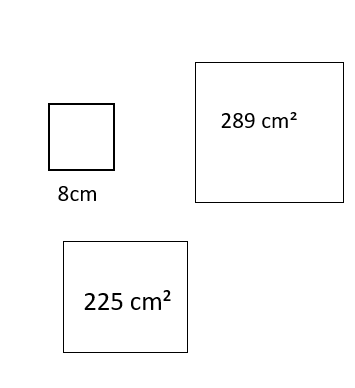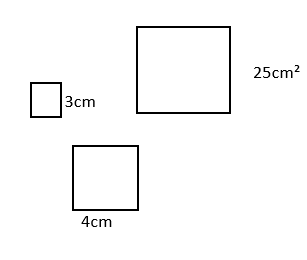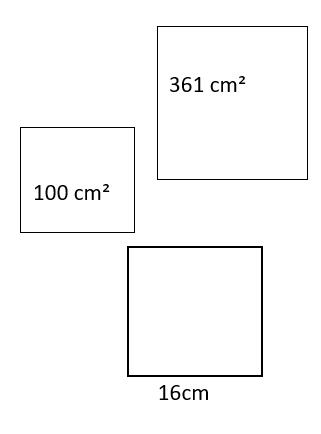
Pythagorean Models
Quiz
•
Mathematics
•
8th Grade
•
Hard
Standards-aligned

Anthony Clark
FREE Resource
18 questions
Show all answers
1.
MULTIPLE CHOICE QUESTION
1 min • 1 pt
1. When three squares are joined at their vertices to form a right triangle, the combined area of the two smaller squares is the same as the area of the larger square.
Which three squares do NOT support this statement?



Tags
CCSS.8.G.B.8
2.
MULTIPLE CHOICE QUESTION
1 min • 1 pt

A teacher is showing his student Jacob to join three squares at their vertices to create the figure shown in the diagram. The student will use small congruent square tiles to cover each region without any gaps or overlaps. Based on the information, which statement is true?
The number of tiles needed to cover Square R is the same as the number of square tiles needed to cover Square G and Square M
The number of tiles needed to cover Square G is the same as the number of tiles needed to cover both Square R and Square M.
The number of tiles needed to cover Square M is the same as the number of square tiles needed to cover Square R and Square G.
Tags
CCSS.3.MD.C.5A
3.
MULTIPLE CHOICE QUESTION
1 min • 1 pt
The legs of a right triangle are represented by a and b, and the hypotenuse of the right triangle is represented by c. Which equation represents the Pythagorean Theorem?
a2 + b2 = c2
a2 + c2 = b2
a + b = c
Tags
CCSS.8.G.B.8
4.
MULTIPLE CHOICE QUESTION
1 min • 1 pt
The Pythagorean Theorem ONLY works on which triangle?
obtuse
scalene
isosceles
right
Tags
CCSS.8.G.B.8
5.
MULTIPLE CHOICE QUESTION
1 min • 1 pt

Which of the following sentences would belong in the proof that describes this image?
The sum of the areas of the two smaller squares is equal to the area of the large square.
The sum of the side lengths of the two smaller squares is equal to the side length of the large square.
The difference of the areas of the two smaller squares is equal to the area of the large square.
The differences of the side lengths of the two smaller squares is equal to the side length of the large square.
Tags
CCSS.8.G.B.8
6.
MULTIPLE CHOICE QUESTION
1 min • 4 pts

Which Pythagorean Triple does the picture illustrate?
4, 5, 6
2, 3, 4
3, 4, 5
1, 2, 3
Tags
CCSS.8.G.B.8
7.
MULTIPLE CHOICE QUESTION
1 min • 4 pts

All of the a square plus all of the b square will perfectly fill the c square with nothing left over.
True
False
Tags
CCSS.8.G.B.8
Create a free account and access millions of resources
Similar Resources on Wayground

20 questions
Adding Unit Squares to Find Area
Quiz
•
3rd Grade - University

21 questions
Nothin' But Algebra - Week 23 Review
Quiz
•
8th Grade

20 questions
Area of All Figures
Quiz
•
7th Grade - University

16 questions
EE Review
Quiz
•
8th Grade

20 questions
Perfect Square and Square Root
Quiz
•
7th - 8th Grade

20 questions
Perfect Squares Area of Squares
Quiz
•
8th Grade - University

14 questions
Area of a Rectangle Word Problems
Quiz
•
4th Grade - University

20 questions
Modeling and One Step Equations with Addition and Subtraction with Algebra Tiles
Quiz
•
8th Grade - University
Popular Resources on Wayground

10 questions
Video Games
Quiz
•
6th - 12th Grade

10 questions
Lab Safety Procedures and Guidelines
Interactive video
•
6th - 10th Grade

25 questions
Multiplication Facts
Quiz
•
5th Grade

10 questions
UPDATED FOREST Kindness 9-22
Lesson
•
9th - 12th Grade

22 questions
Adding Integers
Quiz
•
6th Grade

15 questions
Subtracting Integers
Quiz
•
7th Grade

20 questions
US Constitution Quiz
Quiz
•
11th Grade

10 questions
Exploring Digital Citizenship Essentials
Interactive video
•
6th - 10th Grade
Discover more resources for Mathematics

18 questions
Identifying Functions Practice
Quiz
•
8th Grade

24 questions
3.1 Parallel lines cut by a transversal
Quiz
•
8th Grade

20 questions
Slope from a Graph
Quiz
•
8th Grade

15 questions
Dilations
Quiz
•
8th Grade

15 questions
Parallel Lines Cut by a Transversal
Quiz
•
8th Grade

15 questions
Domain and Range of Functions
Quiz
•
8th Grade

10 questions
Literal Equations
Quiz
•
8th Grade

20 questions
Rational and Irrational Numbers
Quiz
•
8th Grade



